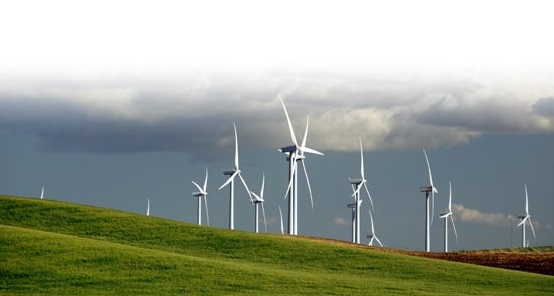The three-year project is set to address impact of wind variability in challenging topographies worldwide.
Vaisala, an expert in environmental and industrial measurement, has been selected by the US Department of Energy (DOE) to coordinate a $2.5 million project to improve wind energy forecasting in complex landscapes and terrain.

The Wind Forecasting Improvement Project 2 is a DOE initiative targeted at enhancing the reliability of wind forecasting around the world, but specifically in challenging areas such as hilly terrain.
As the wind energy industry expands globally, it continues a steady migration into increasingly remote and challenging territories. While mature markets have proven that weather data and modeling greatly enhance the predictability of wind production, particularly in flatter, more simple areas, atmospheric phenomena encountered in more complex geographies worldwide have an impact on wind variability, the reliability of short-term forecasting, and the overall performance of wind energy projects.
This increased variability generates uncertainty that may not only affect grid integration and the ability of developers and operators to fully exploit abundant wind resources in mountainous areas, but also deters international investors from promising, emerging markets such as Latin America, Asia Pacific, and Africa, where complex terrain poses a consistent challenge.
The Wind Forecasting Improvement Project 2 (WFIP2) is the DOE initiative targeted at enhancing the reliability of wind forecasting around the world, but specifically in challenging areas. By doing so, the DOE seeks to reduce the cost of grid integration and help operators optimize performance through more effective short-term modeling of wind variability. As part of this project, Vaisala and its partners have been tasked with conducting a comprehensive 3-phase study of atmospheric phenomena in complex terrain, with the end goal of enhancing the widely used Weather Research and Forecasting model and the National Oceanic and Atmospheric Administration’s (NOAA) Rapid Refresh, and High Resolution Rapid Refresh models.
“Complex terrain creates substantial forecast challenges for wind plants in most regions,” said Jack Peterson, Manager of Energy Operations Support at Southern California Edison. “We have seen many situations where the forecasts are significantly different at neighboring wind farms with only slight elevation changes. Improving the science behind forecasts is an important step and will greatly benefit the industry by removing some of the challenges we face.”
Mr. Peterson will play a supporting role to the study team steered by Vaisala and comprising of the National Center for Atmospheric Research, the University of Colorado Boulder, Sharply Focused, Lockheed Martin, Texas Tech University, the University of Notre Dame, Iberdrola Renewables, Southern California Edison, Cowlitz County Public Utility District, Eurus Energy, Bonneville Power Administration, and Portland General Electric. The project will focus on the rugged Columbia River Gorge region between the states of Washington and Oregon; an area specifically selected because it experiences nearly all of the identified atmospheric phenomena known to impact wind energy. The efforts of Vaisala’s team will be strengthened through significant collaboration with NOAA and DOE national laboratories.
Following a design and planning phase, Vaisala and the wider WFIP2 team will deploy extensive measurement equipment for 18 months starting in mid-2015, to first analyze the specific environmental characteristics affecting wind flow patterns, ranging from soil moisture and surface temperatures to the unique topographical features of mountain-valley regions. These observations will then be used to update and improve the computational and atmospheric physics that underpin current forecasting models. Enhanced model predictions produced during the third phase of the project will then be compared with baseline forecasts produced by existing models to evaluate the success of the initiative.
The work carried out in this study will further improve the accuracy of short-term 0 to 15 hour wind power forecasts in mountainous areas across North America and worldwide. Furthermore, Vaisala will lead a team tasked with developing decision support tools to enable wind energy operators to quantify wind variability and performance uncertainty on an unprecedented level.
As the US Department of Energy recently stated, “With access to better forecasts, wind energy plant operators and industry professionals can ensure wind turbines operate closer to maximum capacity, leading to lower energy costs for consumers.”
“Wind energy is an inherently variable resource,” said Dr. James McCaa, Manager of Advanced Applications at Vaisala and Principal Investigator for WFIP2. “However, as modeling and forecasting techniques improve, we are increasingly able to calculate and predict that variability, a key factor for developers and operators worldwide as they make crucial long-term investment decisions. In mountainous areas, where atmospheric phenomena and unique topography expose some weaknesses in current models, there is still work to be done to enhance the reliability of forecasting.
“As an area with both extremely complex terrain and one of the world’s largest concentrations of wind turbines, the Columbia River Gorge provides an ideal study site. Our work will examine a wide range of meteorological phenomena that impact the operation of wind farms in mountainous terrain worldwide and improve the short-term predictability of wind energy, ultimately reducing the challenges of wind energy integration not just in North America, but also in emerging markets around the globe.”
Vaisala
www.vaisala.com/energy
Filed Under: News




